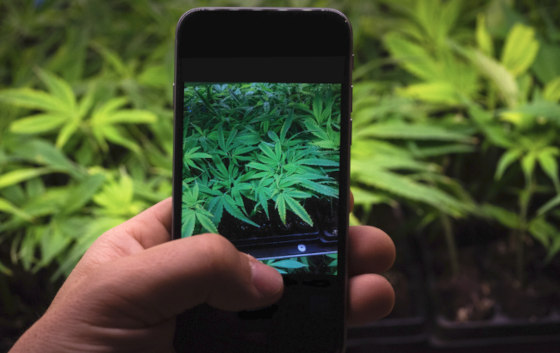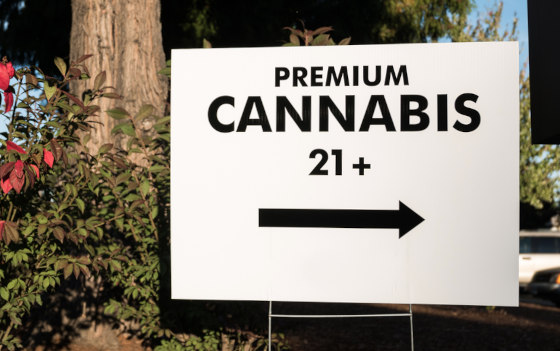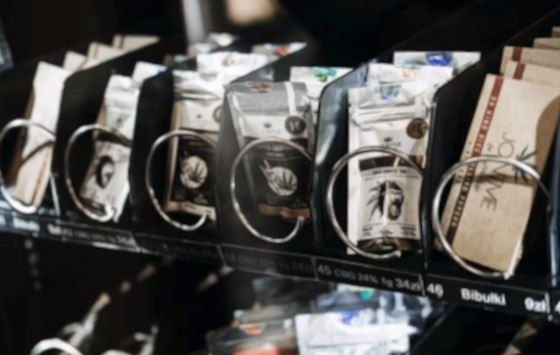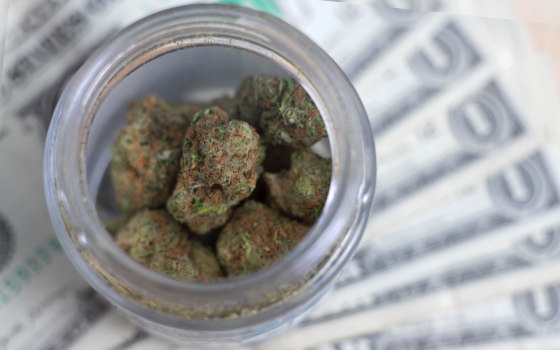The cannabis industry is exploding in popularity and economic potential. And yet, marketing a cannabis business remains exceptionally challenging. Rigid regulations, ever-changing compliance rules, and advertising platform restrictions make it tough to spread the word about your products or services.
Still, with the right strategies, you can connect with your target audience, stand out from competitors, and expand your cannabis brand’s reach. This definitive guide compiles the most effective cannabis marketing tips, both new and classic, to help you create a powerful marketing plan. Whether you run a dispensary, e-commerce site, or cannabis-adjacent company, these insights will lead you toward success.

1. Understanding the Cannabis Marketing Landscape
Before we get into the specific tactics, we need to address the elephant in the room: cannabis marketing is unique. It’s not like selling socks or smartphones. Traditional media, federal regulations, and social stigma make it tricky to rely on mainstream ads or “typical” promotional channels.
Legal Hurdles & Regulatory Minefields
Cannabis laws vary enormously by country, state, and province. In some places, only medical marijuana is permitted, while others allow recreational use. Some restrict THC content, and others limit the type of cannabis products that can be sold.
Federal laws in the United States still consider cannabis illegal (though hemp-derived CBD may be allowed under specific conditions). This discrepancy between state and federal regulations creates hurdles for banking, advertising, and broader marketing initiatives. As a result, many cannabis businesses face restrictions that other industries don’t.
Advertising Restrictions
Major digital advertising platforms like Facebook, Google, Instagram, and Reddit either prohibit or significantly restrict cannabis-related ads. Even ancillary cannabis brands—those that don’t directly sell the plant (for example, packaging companies or vape tech)—may face scrutiny or immediate ad disapprovals.
Regulations also extend to old-school advertising channels such as TV, radio, and billboards. The Federal Communications Commission (FCC) bans cannabis commercials from airing nationally in the U.S. because cannabis remains illegal at the federal level. Some states even prohibit billboard advertising for cannabis products.
Cannabis-Friendly Channels
In response to these restrictions, the industry has birthed its own ecosystem of cannabis-friendly advertising networks, websites, directories, publications, and social platforms. Mantis Ads, Weedmaps, and Leafly are prime examples of networks and directories specifically catering to cannabis brands.
Despite the challenges, there’s an enormous demand for cannabis products, and consumer interest is growing. Success hinges on finding creative ways to reach your audience while staying within the boundaries of local laws and advertising policies.
2. Laying the Foundation: Branding, Compliance, and Strategy
Developing a Distinctive Brand
In an industry full of emerging players, a memorable brand identity is essential. This includes:
- Brand Name and Logo: Choose a name and design that stand out while reflecting your values.
- Brand Voice: Speak in a way that resonates with your target audience. Are you fun and edgy, or scientifically focused and educational?
- Visual Identity: Select fonts, color palettes, and imagery that tie into your brand story.
When done correctly, your brand identity should immediately communicate who you are and what sets you apart.
Know Your Audience
Cannabis consumers are more diverse than many people realize. Medical users differ in age, conditions, and preferences from recreational users. CBD enthusiasts might be older adults seeking wellness solutions or young professionals stressed by daily life. Each audience has unique pain points, interests, and ways of consuming information.
Research demographics, psychographics, and buyer behaviors. Tailor your marketing to the interests of your specific audience segment. If you’re a medical dispensary, highlight the science of cannabinoids. If you’re a lifestyle cannabis brand, focus on creativity, relaxation, or social experiences.
Compliance at the Core
Understanding state and local regulations is non-negotiable. Some key compliance steps include:
- Know Your Local Limits: Check if billboard, bus shelter, or print ads are allowed in your jurisdiction.
- Packaging and Labeling Rules: Cannabis packaging often must include health warnings, dosage information, and child-proofing.
- Age Restrictions: Any marketing material must be age-gated. If your region restricts cannabis advertising to 21+, your promotional strategies must follow suit.
- No False Claims: Don’t promise cures or make unsupported health claims.
When in doubt, consult a legal expert to ensure your marketing stays on the right side of the law.
Building a Strategy
Rather than jumping into random promotional tactics, build a cohesive marketing plan. Set goals (e.g., brand awareness, online orders, or dispensary foot traffic), and break down your strategies by channel. Allocate a budget, outline timelines, and define success metrics for each area—from SEO to social media to local advertisements.

3. Search Engine Optimization (SEO): Maximizing Online Visibility
Search engine optimization (SEO) is one of the most powerful—and legal—ways to grow brand visibility. Even though Google and other search engines might restrict cannabis-related ads, they do not typically restrict cannabis-related organic search results. This levels the playing field and allows well-optimized cannabis websites to rank for key search terms.
Keyword Research
You’ll notice that tools like Google Keyword Planner often omit or hide data for cannabis-specific search terms. However, there are ways around this:
- Use General Tools for Related Searches: Identify synonyms or adjacent terms, like “herbal remedies,” “alternative health,” or “CBD wellness.” Then, track their search volumes.
- Leverage Third-Party SEO Suites: Tools like Ahrefs, SEMrush, or Moz can give you clues about cannabis-related keywords, even if data is incomplete.
- Search Engine Autocomplete: Type partial queries into Google to see what it suggests. This can uncover long-tail keywords and questions real users commonly ask.
On-Page Optimization & Content Strategy
- Create Quality Content: Publish blog posts, FAQs, product pages, and videos that are genuinely helpful. Offering unbiased education is a huge trust-builder in the cannabis world.
- Optimize Page Titles, Headings, and Meta Descriptions: Make sure search engines understand what each page is about. Use relevant keywords (without keyword-stuffing) and write meta descriptions that invite clicks.
- Improve User Experience: A fast-loading, mobile-friendly site with intuitive navigation will keep users on the page longer, which boosts SEO signals.
- Leverage Internal Linking: Guide readers from one page to another within your site, helping them discover new products or blog posts. This also helps search engines crawl your site more thoroughly.
Off-Page SEO and Link Building
- Guest Posting: Contribute high-quality content to cannabis-friendly websites and publications.
- Industry Directories: List your dispensary or brand on Weedmaps, Leafly, and other cannabis or local directories.
- Press Features: If you host events or launch new products, reach out to industry reporters for potential coverage.
- Influencer Collaborations: Influencers who link to your site from their blogs or websites can boost your domain authority.
Remember, a robust SEO strategy is a marathon, not a sprint. It may take several months to climb the rankings, but the payoff is a consistent flow of free, high-intent traffic—people actively searching for cannabis products or information.
4. Cannabis-Friendly Ad Networks & Programmatic Advertising
If you have a marketing budget and want to scale quickly, paid advertising can be effective—if you know where to run your ads. Since major platforms often reject cannabis campaigns, smaller cannabis-friendly ad networks and specialized programmatic services fill the gap.
Dedicated Cannabis Ad Networks
- MANTIS Ads: Focuses on geo-targeted campaigns, enabling your brand to reach local audiences. Their network of publishers includes numerous 420-friendly websites.
- ALT Network: An advertising network for restricted industries across the web. You set your budget, define targeting, and they distribute your ads across relevant publishers.
- RevOffers: Combines affiliate marketing and ad placements. It’s especially helpful for medical marijuana and CBD brands looking to partner with like-minded influencers and publishers.
Programmatic Display & Video
- Programmatic Ads: Programmatic advertising automates the buying and selling of online ad impressions, placing banners or videos on relevant websites. Cannabis-friendly Demand Side Platforms (DSPs) have emerged to let you target age-appropriate audiences while complying with local regulations.
- Retargeting Campaigns: Once someone visits your website, retarget them with display or video ads on other sites. With mainstream networks like Facebook off-limits, retargeting through cannabis-friendly DSPs remains a powerful way to remind potential customers about your brand.
Pros & Cons of Cannabis Ad Networks
Pros:
- Rapid brand exposure on niche sites already visited by cannabis enthusiasts.
- Ability to run sophisticated, data-driven campaigns with detailed audience targeting.
- Opportunity to outmaneuver competitors still relying on social channels that ban cannabis.
Cons:
- Smaller audience size compared to Google or Facebook.
- May require larger monthly ad spends to see meaningful results.
- Some networks lack brand variety, so potential customers might see the same ads repeatedly, reducing effectiveness.
Still, if you have the resources, these networks are a godsend for direct lead generation and brand awareness. They’re also often more stable than trying to sneak ads past Google or Facebook’s automated systems—only to get your account shut down a few weeks later.

5. Social Media Strategies Without Paid Ads
Social media sites remain vital for brand building and audience engagement. While direct ad placements are heavily restricted, that doesn’t mean you can’t cultivate a thriving presence and reach fans organically. Below are some tips for navigating the major platforms:
Facebook & Instagram
- Create a Brand Page: Even if you can’t run ads, having a verified page for your dispensary or cannabis brand helps establish credibility.
- Join or Create Private Facebook Groups: Facebook’s algorithm favors community-based interaction over typical business posts. Launch a members-only group where fans share experiences, questions, and product recommendations—turn them into brand ambassadors.
- Content Balance: Mix educational posts (“How Terpenes Affect the Cannabis Experience”), behind-the-scenes photos or videos from your facilities, and responsible usage tips. Keep direct promotions limited; focus more on building community and trust.
- Hashtags & Tagging: On Instagram, use niche hashtags (#Mmemberville, #Green, #MJ) to show up in relevant searches. Tag partner brands and creators to expand your post reach.
X (Formerly Twitter)
- Engage in Conversations: X thrives on quick, real-time dialogue. Respond to mentions, retweets, and relevant hashtags. Even though you can’t run ad campaigns, you can still build brand awareness by regularly engaging with followers and thought leaders in the cannabis space.
- Hashtags & Trends: Monitor cannabis-related hashtags (like #Cannabis or #CBD) and jump into relevant conversations. Timely responses and sharing valuable information can help you gain a loyal following.
YouTube & Video Marketing
- Educational Videos: YouTube allows many educational cannabis videos, as long as they don’t explicitly promote illegal activity or sales. Topics like “Cannabis 101” or “How To Properly Dose Edibles” can be highly engaging.
- Brand Stories & Vlogs: Showcase your grow facilities, your team, or how you ensure quality. Authentic behind-the-scenes content resonates with curious consumers.
- Live Streams & Q&A Sessions: You can host a weekly or monthly live stream answering cannabis-related questions. This fosters real-time engagement and positions you as an industry expert.
Pinterest & Creative Visual Platforms
- Infographics & DIY: Pinterest users love visuals, tips, and tutorials. You can share cannabis-infused recipes, health benefits infographics, or photos of artisanal cannabis accessories.
- Link to Blog Posts: While direct product links are often banned, you can still funnel traffic to your blog or educational landing pages. Make sure to add disclaimers that your content is for those of legal age.
TikTok & Emerging Platforms
- Check Terms of Service: TikTok has been known to remove cannabis content, but some companies find success with creative, comedic angles that sidestep direct promotion.
- Niche Platforms: Emerging 420-friendly social networks cater specifically to cannabis fans. They’re smaller, but the audience is laser-targeted.
Social media takes persistence, but it’s an excellent tool for building brand loyalty, especially when outright ads aren’t allowed.
6. Affiliate & Influencer Marketing
Affiliate marketing and influencer partnerships can be goldmines in cannabis, especially if you carefully select partners who already reach your desired audience.
Affiliate Marketing
- How It Works: You offer a commission to bloggers, social media influencers, or website owners who refer sales to your brand using unique links or codes. You only pay when a sale is made.
- Set Up an Affiliate Program: Implement tracking software on your site or partner with affiliate networks like RevOffers. Clearly outline commission rates, permissible marketing methods, and compliance guidelines.
- Recruit Influencers & Bloggers: Marijuana-friendly bloggers or niche lifestyle writers can become your brand evangelists. Since cannabis content is often restricted on mainstream ads, affiliate programs let these partners organically promote your brand to their followers.
Influencer Marketing
- Finding the Right Influencers: Look for social media personalities with a following that matches your customer demographics. Could be health & wellness gurus, cannabis activists, or lifestyle enthusiasts who genuinely love the plant.
- Partnership Formats: Run sponsored content, host a giveaway, launch co-branded products, or set up an affiliate arrangement for ongoing promotions.
- Measure ROI: Track influencer-driven traffic and sales. Provide discount codes or affiliate links so you can trace conversions back to their source.
- Legal Compliance: Ensure influencers include proper disclaimers (#sponsored, #ad) and follow local guidelines. Otherwise, your brand may face penalties.
Influencer campaigns can quickly spur brand loyalty and awareness, especially when your partners have genuine enthusiasm for cannabis. Just make sure you vet them thoroughly to avoid reputational pitfalls.

7. Traditional Advertising
Yes, old-school advertising still has a place in cannabis marketing—sometimes it can be highly effective. Just be sure to confirm if it’s legal in your region.
Billboards & Outdoor Advertising
- High Visibility: Billboards are often a go-to in states like California, Nevada, and Oklahoma, where they’re still legal. They can capture a large local audience, quickly raising brand awareness.
- Compliance: Some states require that no billboard be placed within 1,000 feet of a school or daycare. Others restrict images of the product. Check the fine print.
- Creative Impact: Use a memorable tagline and distinctive visuals. Keep the design clean; passersby only have a few seconds to process your ad.
Print Ads & Magazines
- Cannabis-Focused Publications: Magazines like High Times or local alt-weeklies are more open to running cannabis ads, but they might still have disclaimers or design constraints.
- Local Newspapers: Some local newspapers or city guides will accept cannabis ads, though you must often exclude certain images or phrasing.
SMS Marketing
- Direct Reach: Text messaging can be a powerful way to deliver promotions, product updates, and educational info straight to a customer’s phone.
- Compliance & Restrictions: Many carriers and SMS platforms have rules against promoting federally prohibited substances, including cannabis products. Brands can face unexpected bans or account suspensions if they’re not meticulous with their wording and disclaimers.
- Best Practices: Obtain explicit consent from subscribers and ensure your messages clearly target audiences of legal age. Focus on informative, value-driven texts rather than spammy sales pushes. Even then, always double-check your platform’s terms of service to avoid sudden service termination.
Radio & Satellite
- FCC Restrictions: Broadcast radio is generally off-limits because the FCC forbids cannabis ads at the federal level. Satellite radio, on the other hand, has fewer restrictions, so consider channels like SiriusXM if your budget allows.
- Local Stations: A few smaller stations might accept cannabis ads if you carefully word your message (e.g., focusing on wellness or brand awareness). However, these opportunities are case-by-case and extremely dependent on local laws.
8. Local Market Domination: Events & Sponsorships
For dispensaries and retail-focused brands, dominating your local market is crucial. Many cannabis customers prefer to shop at nearby stores or order local deliveries. Focus your efforts on hyper-local tactics:
In-Person Events
- Community Events & Festivals: Sponsor or host local music gigs, wellness fairs, or charity events. You can also collaborate with other local businesses (e.g., a yoga studio that hosts a cannabis-infused wellness event).
- Trade Shows & Cannabis Expos: National events like MJBizCon or regional cannabis conventions draw entrepreneurs, industry partners, and consumers. Having a booth or speaking slot can open doors to B2B partnerships and local brand awareness.
Educational Workshops & Seminars
- Budtender Workshops: Educate your staff so they become product experts. Then host free sessions for the public on topics like “Cannabis 101” or “How to Properly Dose Edibles.” Position your dispensary as the local authority.
- Collaborate with Medical Professionals: If medical cannabis is your focus, partnering with doctors, nurses, and therapists for informational events can boost your credibility.
Hyper-Local Advertising
- Local TV Channels: Many local TV stations are still subject to federal broadcast laws, so approach with caution. If you find a loophole or a channel that allows certain public-service style messages, clarify every detail in writing first.
- Regional Websites & Blogs: Sponsor content on popular local websites or news outlets. Sometimes a custom-tailored partnership can yield better results than a generic banner ad.
- Geo-Targeted Digital Ads: When you run programmatic or cannabis-friendly network ads, refine your audience to a tight radius around your physical store(s). That way, you’re reaching people likely to convert in-person.

9. Retail Innovations: Cannabis Vending Machines
Though still an emerging phenomenon, cannabis vending machines are an intriguing—and fun—marketing tool.
- Instant Brand Visibility: Machines placed in or near your dispensary can attract curious customers who prefer a quick, contactless purchase.
- Interactive Advertising: Modern cannabis kiosks, like those from Grasshopper Kiosks or American Green, offer digital screens to run promotional videos, highlight new products, or educate on strains.
- Skip the Line: Customers can pre-order and pick up items from the vending machine, cutting down on wait times. This can be a differentiating factor that draws more visitors.
If your region allows it, these machines can serve as an eye-catching promotional platform. Not to mention, they offer convenience that might keep people coming back.
10. Educating Readers & Customers
One of the best ways to stand out in the cannabis industry is through education. Because cannabis still carries stigma and misconceptions, customers value brands that provide clarity, science-based info, and user-friendly guidance.
- Blog Articles & White Papers: Tackle topics like dosing guidelines, differences between strains (indica vs. sativa vs. hybrids), terpene profiles, or potential health benefits.
- Email Newsletters: Invite subscribers to learn more about the products they purchase. Offer tips on safe consumption or updates on new product lines.
- Product Demos & Tutorials: Host live or recorded demos on how to use certain devices (vaporizer pens, dab rigs, etc.), or how to make edibles at home.
- Social Media Q&A: Dedicate a regular time slot for answering follower questions. Build trust by being transparent and informative.
When your audience sees you as a reliable source of knowledge, they’re more likely to pick your brand over competitors.

11. Word-of-Mouth & Brand Ambassadors
Word-of-mouth marketing is as old as commerce itself, and it’s especially powerful in cannabis. Customers often rely on personal recommendations to discover dispensaries or products.
- Encourage Reviews & Testimonials: Ask happy customers to share their experiences on platforms like Google, Yelp, Leafly, or Weedmaps. Offer a small discount on their next purchase as a thank-you.
- Loyalty Programs: Provide points, discounts, or freebies for repeat purchases. This not only drives recurring revenue but also fosters brand loyalty.
- Brand Ambassador Programs: Identify passionate customers or local influencers who genuinely love your brand. Give them exclusive perks or early product access in exchange for honest word-of-mouth referrals.
- User-Generated Content: Repost photos or testimonials from everyday customers. Showing real people enjoying your products can be more compelling than any glossy, corporate-style advertisement.
12. Data & Analytics: Measuring Your Cannabis Marketing
Marketing without measurement is guesswork. Especially in an industry with restricted channels, you need to track results carefully to see which strategies are performing well.
- Google Analytics: Track website visits, bounce rates, average time on site, and conversions. Segment traffic by referral source (organic, affiliate, referral, direct) for deeper insights.
- Point-of-Sale (POS) Data: For dispensaries, detailed POS reports show which promotions or product lines are driving sales. Identify which strains or edibles get the best response.
- Ad Network Dashboards: If you’re using MANTIS, Traffic Roots, or another specialized network, monitor click-through rates (CTR), conversions, and cost per acquisition (CPA).
- Social Media Metrics: Even if you’re not running paid ads, track engagement (likes, comments, shares, saves) on each platform. See what content resonates.
- Email Marketing Stats: Email open rates, click-through rates, and unsubscribes provide insight into how engaged your subscriber list is.
Use this data to refine your strategy. Double down on channels that work, pivot away from those that don’t. In a constantly changing industry, agility is key to survival and growth.

13. Anticipating the Future of Cannabis Marketing
As the legal status of cannabis evolves, so too will the marketing landscape. What might we see in the near future?
- Loosening Digital Ad Restrictions: Public opinion and legislative changes could prompt major platforms like Google or Facebook to partially open the door for verified, legal cannabis brands.
- Mainstream Collaborations: As stigma decreases, more mainstream brands (food, beverage, wellness) may seek partnerships or co-branding opportunities with cannabis companies.
- Expanded Medical Research: Greater research can yield new breakthroughs and marketing angles centered on health benefits, leading to a more sophisticated conversation with consumers.
- Greater Competition & Consolidation: Larger corporations may enter, pushing smaller players to differentiate even more with authentic branding and niche specializations.
Staying on top of these trends means staying flexible. Keep investing in a sustainable marketing foundation—SEO, brand loyalty, educational content—so that any future changes to advertising rules only amplify the success you’re already building.
14. Final Thoughts: Seize the Moment
Despite the complexities, there’s no denying the immense opportunity in cannabis. The very challenges that make marketing tough also serve as barriers for less-dedicated competitors. Companies willing to invest time and creativity into educational, community-driven strategies can carve out a loyal following in a rapidly expanding market.
- Educate: Stand out by being a trusted, knowledgeable voice in the space.
- Innovate: Seek new channels, new partnerships, and new ways to reach your audience.
- Stay True: Cannabis culture thrives on authenticity. Don’t try to be something you’re not.
Remember, the cannabis industry is still in its formative stages. Today’s marketing pioneers will become tomorrow’s industry icons. If you apply the strategies in this guide—SEO, affiliate marketing, local outreach, cannabis-friendly ad networks, creative social media, and more—you’ll be well on your way to building a robust, successful cannabis brand.
Good luck, stay compliant, and have fun growing your green empire!

